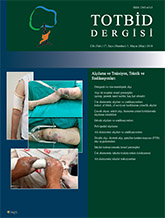
Fixation and treatment of musculoskeletal conditions like fractures, soft tissue damages or some musculoskeletal diseases require the use of splints or casts. Splints are faster and easier to apply, and they are non-circumferential immobilizers. Therefore, splints are ideal for management of a variety of acute musculoskeletal conditions in which swelling is anticipated such as fractures, dislocations, sprains, and other orthopaedic cases. On the other hand, casts are circumferential immobilizers. Therefore, casts provide better stabilization, and they are used in definitive fracture management; but they have higher complication rates. The use of casts and splints is generally limited to the short term to maximize benefits while minimizing the complications. More than necessary immobilization while using casts or splints lead to complications. Because of this we need to be familiar with indications for application, proper technique, and potential pitfalls of casting and splinting to optimize patient care while treating common orthopaedic injuries.